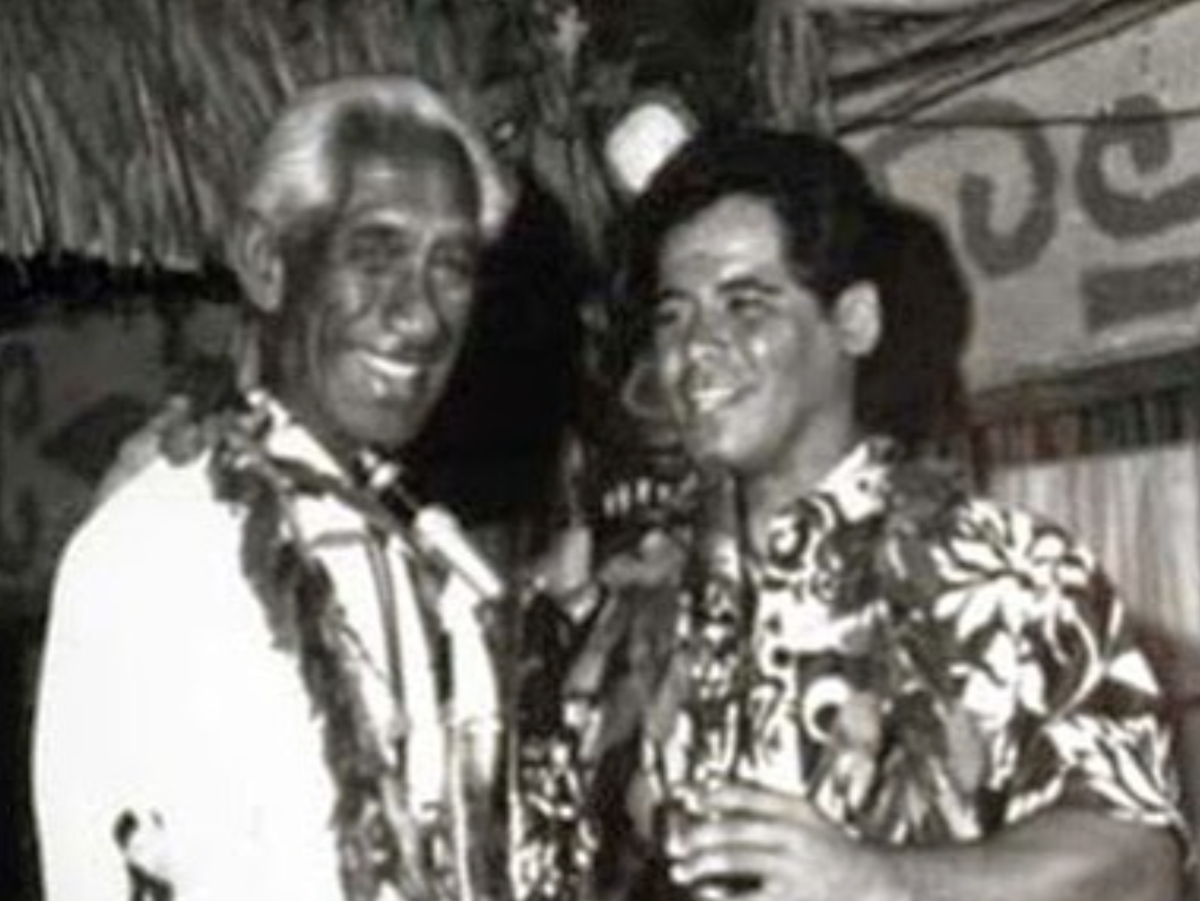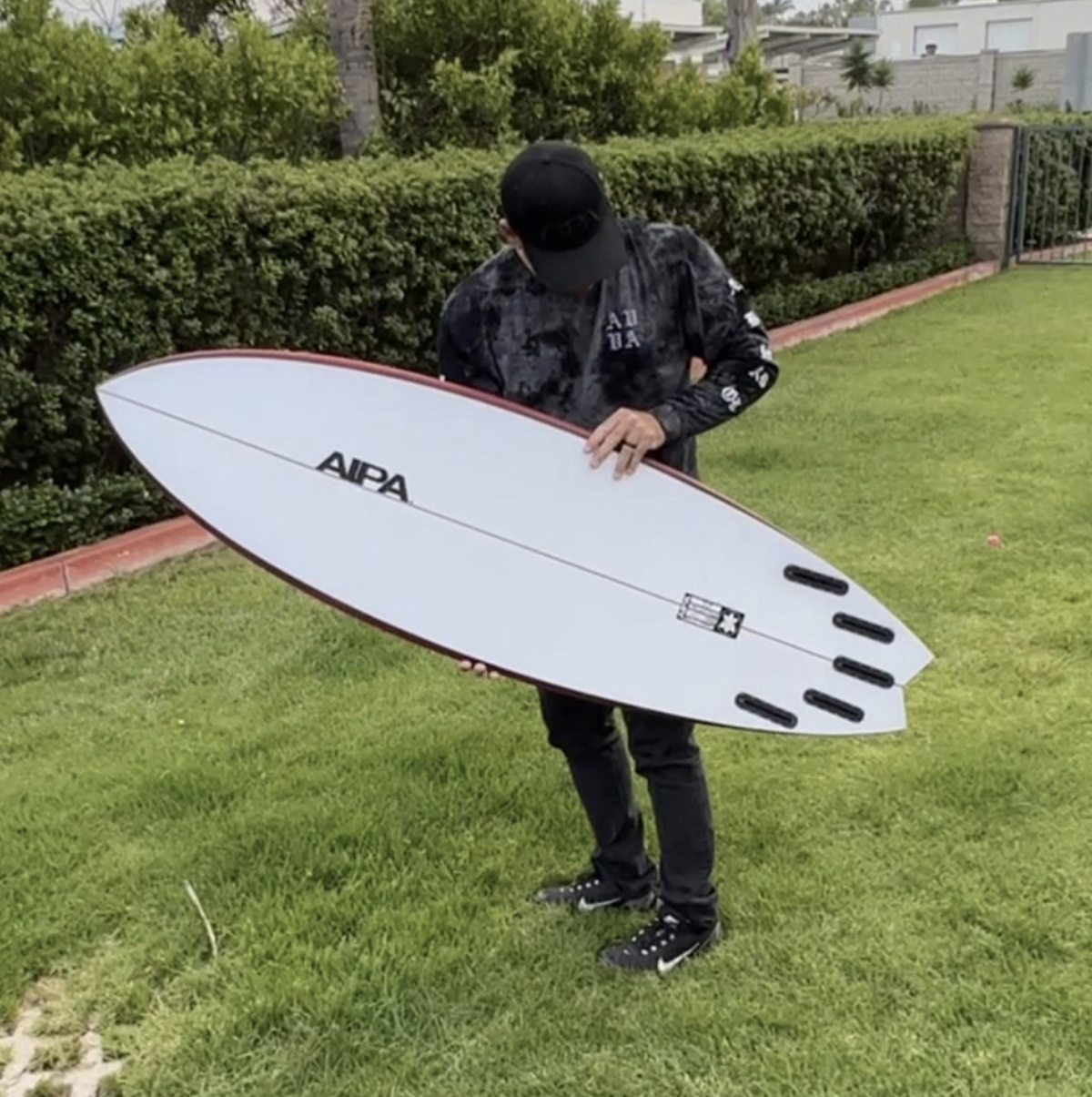Surfing in the 1970’s was all about unique and original innovation, and a specific era between 1972 and 1977 saw the most radical shifts the sport had ever seen. Leading this charge was native Hawaiian surfer, board shaper, and surf coach, Ben Aipa.

Just one year after learning how to surf, Ben paddled out with Eddie Aikau during the 1965 Duke Invitational to make a statement that Hawaiians should be invited to surf in the contests held in Hawaii. Three years after that, Hawaiian Fred Hemmings used a board shaped by Ben to win the 1968 World Championship. Then in 1970, Ben founded his own brand, Aipa Surfboards. His original designs, the Swallowtail, the Sting, and the Wing Twin, were the foundation of what Ben would build his surfboard lineage upon and planted the seeds of what would become a substantial family tree of surfboard design. He invented the double-edged swallowtail design in 1972 and followed this with the split-tail design in 1974.
Larry Bertlemann and Michael Ho made the Aipa Swallowtail a big hit at a world surf contest in Oceanside in 1972, while the Sting exploded in 1974 thanks to Buttons Kaluhiokalani, Dane Kealoha, Mark Liddell, Bertlemann, and Mark Richards.
"When everyone else was out there cruising, these guys were out there smashing and banging…innovating performance surfing…giving my sting design authority." Ben Aipa
Ben’s effect and influence is sure to be felt through generations of surfers, shapers, and coaches to come. The year 2024 ushers in the 50th anniversary of the development of the Sting – arguably the most pivotal moment in surfboard design history. Ben’s son, Duke, is reigniting his father’s explosively innovative 70’s designs in a line of boards called The Descendants of Aipa. The new collection features the Modern Swallow, the Modern Sting, and the Modern Wing Twin – legacy designs reimagined for today’s performance and soul surfers alike.

“Inspiration leads to creation. So watch the world around you and visualize what you want to create.” Ben Aipa
The Modern Swallow
- Representative of the precipice of high-performance surfing
- Carries Ben’s original Swallowtail design forward into the future with Duke’s modern adjustments
- Designed to be a tight-in-the-pocket alternative short board primarily meant for a 2’ to 4’ Hawaiian wave or punchy shorebreaks
- Possesses a sleek, 70’s missile outline that makes it an absolute screamer in the barrel
- The wide point is pushed forward a classic 3” to accurately recreate the plan shape with a widened tail section for modern flair and functionality
- The bottom contour consists of a rolled nose, to single under the chest flowing into double, and generous Vee out of the tail
The Modern Sting
- The Sting made it possible for surfers to push past the limits of conventional boards and brought in the first high-performance movement
- The design is focused on surface area reduction by utilizing a unique wing placement that allows for a wider forward surface area for “planing” and carrying speed, with an abruptly reduced tail curve behind the sting to initiate early release, intuitive pivot, and radical maneuverability reaction
- The Sting was the first winged surfboard of its kind and was the blueprint for what would become the Winged Twin, and later on, influence the bump wing thruster of the 1980’s
- Designed to be a directional slingshot that can draw long lines and pivot in the pocket with a different stable, yet loose type of feel
- The plan shape is influenced by the recent quad wonder board, the DNA-collaborated on and designed by brothers Duke and Akila, with a more relaxed entry and exit rocker, a bit more curve in the tail section, and a slightly pulled-in nose
- The bottom contour consists of a rolled nose, to single under-the-chest flowing into double and generous Vee starting 12” up from the tail
The Modern Wing Twin
- The Wing Twin came about after several iterations of wing placements
- Mark Richards brought the Sting to the world competitive stage, but he was looking for a different sensation
- Richards asked Ben to move the wing further down to change the control and pivot of the board
- The wing ended up in what is known as the swing placement – midway between a sting and a standard wing
- The design is focused on surface area reduction to positively enhance performance
- Moving the wing down allowed the plan shape to maintain a more continuous curve before the break in the outline at the wing, which perfectly complimented the twin fin configuration
- The Modern Wing Twin takes the original 1977 forward wide point concept and fuses it with the Aipa rails, rocker, and contours of today
- The rocker is a modern, classic, mid-low for fluid drive and performance function
- The rails are a medium taper (soft and forgiving, yet precise) with the lowered apex, and the bottom contour consists of a rolled nose, to shallow single under forward foot, flowing into double concave with a generous Vee starting 8” up from the tail

